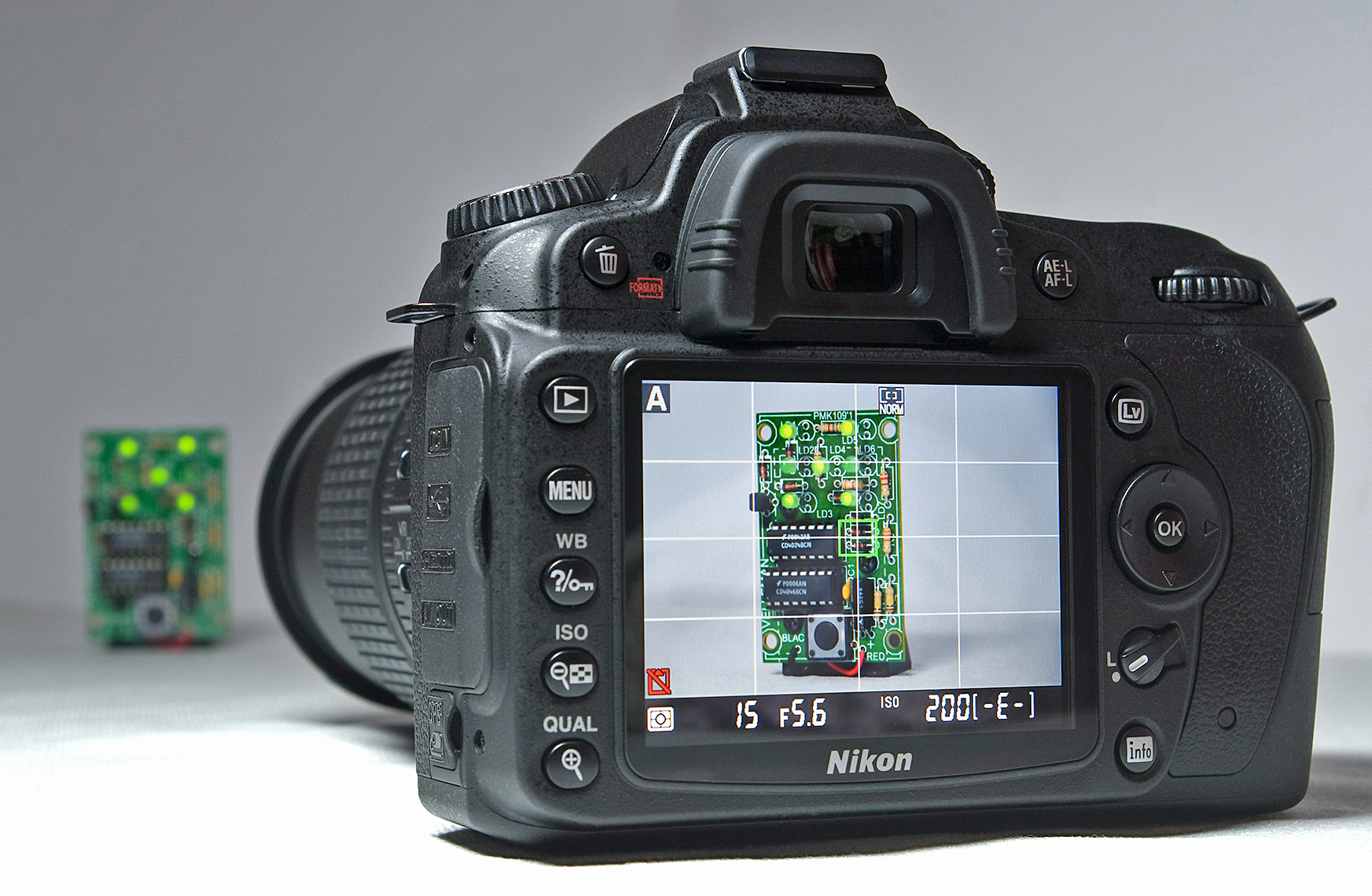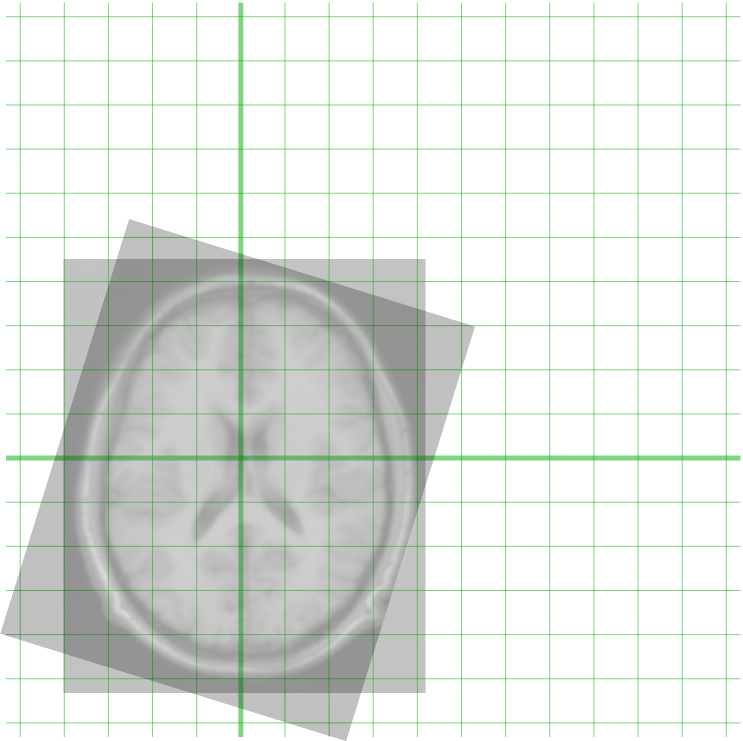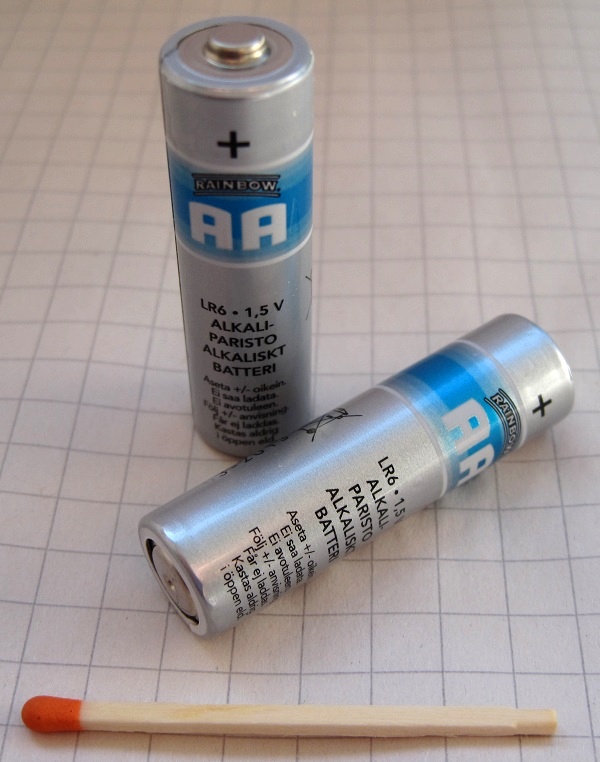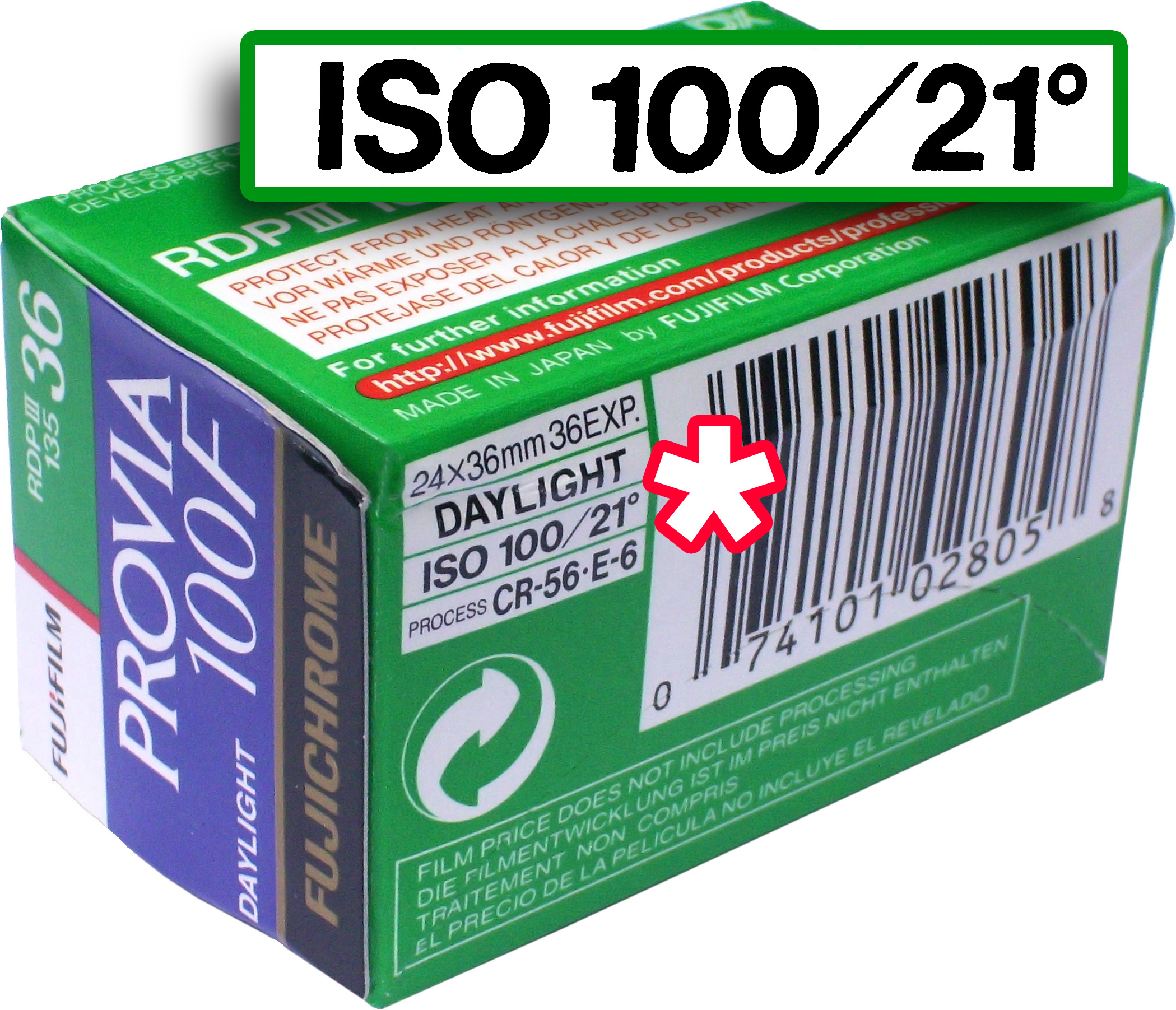|
Pentax K-r
The Pentax K-r is a 12.4-megapixel digital single-lens reflex camera, announced on September 9, 2010, and replaced the K-x in Pentax' line-up, with which it shares many features. The K-r is available in three body colors (black, white and red) in North America, with other colors available only in the Japanese market. The K-r introduces a new SAFOX IX autofocus system and has a 3-inch display. The image quality of Pentax K-r and K-x is identical, but colour fidelity in JPEG output has been increased. The K-r has been improved over the K-x in other areas, such as the K-r showing the active focus point in the viewfinder when the shutter button is half-pressed, the K-r offering the joint second-widest ISO range in the Pentax line-up along with K-30—100-25600 in extended mode, which only the K-5 exceeds (K-x: 12800 in extended mode), having the joint second-fastest continuous shooting (6.0 fps) of current Pentax DSLRs (same as the K-30), and using rechargeable battery Li-Ion D-LI1 ... [...More Info...] [...Related Items...] OR: [Wikipedia] [Google] [Baidu] |
Pentax
was a Japanese camera and optical equipment manufacturer. Currently, it exists as the Pentax Life Care Business Division of Hoya's medical endoscope business, as well as the digital camera brand of Ricoh Imaging, a subsidiary of Ricoh. Pentax, founded in 1919 as a town workshop specializing in polishing eyeglass lenses, developed Japan's first single-lens reflex camera, the Asahiflex, in 1952. By 2006, Pentax's domestic market share in digital cameras had declined to 4%. In 2007, Pentax was acquired by Hoya and subsequently merged with the company the following year. In 2011, Hoya spun off the Pentax brand's digital camera business, which was then acquired by Ricoh, leading to the establishment of Pentax Ricoh Imaging (current Ricoh Imaging). As a response to growing interest in film photography, Pentax launched the Pentax 17 on June 17, 2024. The Pentax 17 is a half-frame film camera. This launch marks the first Pentax film camera in over two decades. Corporate history ... [...More Info...] [...Related Items...] OR: [Wikipedia] [Google] [Baidu] |
Pentax K-x
The Pentax K-x is a 12.4 megapixel digital single-lens reflex camera, which was announced on September 16, 2009. The Pentax K-x uses a Sony Exmor sensor (different from the back-lit Exmor-R used in other Sony models). In some cases it even approaches the quality produced by full-frame DSLRs like the Nikon D700 and the Canon 5DMkII, both with larger sensors. The Pentax K-x is suitable for low light conditions for both still and video photography. The K-x is a compact model above the entry-level K2000/K-m. It is lighter than other Pentax DSLRs, including the K2000, and lacks the weather sealing of the K10D, K200D, K20D, and K-7, and is intended to be sold with lightweight DA-L-series lenses. It offers some improvements over the high-end K-7, including a maximum sensitivity of ISO12800 with lower noise than comparable cameras and even than some of higher class, a maximum shutter speed improved to 1/6000 s, and a faster burst mode of 4.7 frame/s. DPReview.com has obser ... [...More Info...] [...Related Items...] OR: [Wikipedia] [Google] [Baidu] |
Live-preview Digital Cameras
Live preview is a feature that allows a digital camera's display screen to be used as a viewfinder. This provides a means of previewing framing and other exposure before taking the photograph. In most such cameras, the preview is generated by means of continuously and directly projecting the image formed by the lens onto the main image sensor. This in turn feeds the electronic screen with the live preview image. The electronic screen can be either a liquid crystal display (LCD) or an electronic viewfinder (EVF). Background The concept for cameras with live preview largely derives from electronic (video) TV cameras. Until 1995 most digital cameras did not have live preview, and it was more than ten years after this that the higher end digital single-lens reflex cameras (DSLR) adopted this feature, as it is fundamentally incompatible with the swinging-mirror single-lens reflex mechanism. The first digital still camera with an LCD for autogain framing live preview was the ... [...More Info...] [...Related Items...] OR: [Wikipedia] [Google] [Baidu] |
Pentax DSLR Cameras
was a Japanese camera and optical equipment manufacturer. Currently, it exists as the Pentax Life Care Business Division of Hoya's medical endoscope business, as well as the digital camera brand of Ricoh Imaging, a subsidiary of Ricoh. Pentax, founded in 1919 as a town workshop specializing in polishing eyeglass lenses, developed Japan's first single-lens reflex camera, the Asahiflex, in 1952. By 2006, Pentax's domestic market share in digital cameras had declined to 4%. In 2007, Pentax was acquired by Hoya and subsequently merged with the company the following year. In 2011, Hoya spun off the Pentax brand's digital camera business, which was then acquired by Ricoh, leading to the establishment of Pentax Ricoh Imaging (current Ricoh Imaging). As a response to growing interest in film photography, Pentax launched the Pentax 17 on June 17, 2024. The Pentax 17 is a half-frame film camera. This launch marks the first Pentax film camera in over two decades. Corporate history E ... [...More Info...] [...Related Items...] OR: [Wikipedia] [Google] [Baidu] |
Image Registration
Image registration is the process of transforming different sets of data into one coordinate system. Data may be multiple photographs, data from different sensors, times, depths, or viewpoints. It is used in computer vision, medical imaging, military automatic target recognition, and compiling and analyzing images and data from satellites. Registration is necessary in order to be able to compare or integrate the data obtained from these different measurements. Algorithm classification Intensity-based vs feature-based Image registration or image alignment algorithms can be classified into intensity-based and feature-based.A. Ardeshir Goshtasby2-D and 3-D Image Registration for Medical, Remote Sensing, and Industrial Applications Wiley Press, 2005. One of the images is referred to as the ''target'', ''fixed'' or ''sensed'' image and the others are referred to as the ''moving'' or ''source'' images. Image registration involves spatially transforming the source/moving image(s) ... [...More Info...] [...Related Items...] OR: [Wikipedia] [Google] [Baidu] |
AA Battery
The AA battery (or double-A battery) is a standard size single cell cylindrical Dry cell, dry battery. ANSI and IEC battery nomenclature gives several designations for cells in this size, depending on cell features and chemistry. The Battery nomenclature, IEC 60086 system calls the size R6, and American National Standards Institute, ANSI C18 calls it 15.Classic (LR6) datasheet from energizer.com It is named UM-3 by Japanese Industrial Standards, JIS of Japan. Historically, it is known as D14 (hearing aid battery), U12 – later U7 (standard cell), or HP7 (for zinc chloride 'high power' version) in official documentation in the United Kingdom, or a ''pen cell''. AA batteries are common in portable Electronics, electronic devices. An AA battery is composed of a single electrochemical cell that may be either a primary battery (dispos ... [...More Info...] [...Related Items...] OR: [Wikipedia] [Google] [Baidu] |
Lithium-ion Battery
A lithium-ion or Li-ion battery is a type of rechargeable battery that uses the reversible intercalation of Li+ ions into electronically conducting solids to store energy. Li-ion batteries are characterized by higher specific energy, energy density, and energy efficiency and a longer cycle life and calendar life than other types of rechargeable batteries. Also noteworthy is a dramatic improvement in lithium-ion battery properties after their market introduction in 1991; over the following 30 years, their volumetric energy density increased threefold while their cost dropped tenfold. In late 2024 global demand passed per year, while production capacity was more than twice that. The invention and commercialization of Li-ion batteries has had a large impact on technology, as recognized by the 2019 Nobel Prize in Chemistry. Li-ion batteries have enabled portable consumer electronics, laptop computers, cellular phones, and electric cars. Li-ion batteries also see signifi ... [...More Info...] [...Related Items...] OR: [Wikipedia] [Google] [Baidu] |
Pentax K-5
The Pentax K-5 is a 16.3-megapixel digital single-lens reflex camera, announced on September 20, 2010. It began shipping in mid-October 2010 and it was replaced by the Pentax K-5 II in the third quarter of 2012. Externally, the camera body is almost unchanged from the Pentax K-7 (the mode dial on the left side is slightly higher). The main improvements compared to the previous model are higher light sensitivity (ISO range between 80 and 51,200, high ISO performance with improved noise control); an increase in sensor resolution by nearly two megapixels; and an all-new autofocus subsystem, SAFOX IX+. The use of a Sony sensor in the K-5 signalled a major departure from the Samsung sensor partnership. The latest firmware release is 1.16. Feature improvements Consistent with previous Pentax models, there are many small improvements as well: * Multiple customizable "USER" modes * Customizable raw/Fx button replaces previous single-purpose raw button * Selectable noise reduction le ... [...More Info...] [...Related Items...] OR: [Wikipedia] [Google] [Baidu] |
Pentax K-30
The Pentax K-30 is a 16.3-megapixel Pentax digital single-lens reflex camera, announced on 21 May 2012. At its introduction, it was in the middle of Pentax's DSLR range, above the now-discontinued entry-level K-r, and below the semi-pro K-5 and successor K-5 II. Overview It has a stainless steel chassis, and unlike most DSLRs of its class, is fully weather sealed. It can shoot continuously at up to 6 frames per second with a maximum shutter speed of 1/6000th of a second. It can capture video at 1080p at either 30, 25, or 24 fps. Like all current and recent Pentax dSLRs it features in-body shake reduction, removing the need for each lens to have image stabilisation. The Pentax K mount allows use of legacy lenses dating back to the 1970s, or even earlier with an M42-mount adapter, for which the K-mount is fully compatible. The autofocus system (SAFOX IXi+) is an advance over the K-5 and features 11 AF points, 9 of which are cross-type (i.e. sensitive to vertical as well as hor ... [...More Info...] [...Related Items...] OR: [Wikipedia] [Google] [Baidu] |
Film Speed
Film speed is the measure of a photographic film's sensitivity to light, determined by sensitometry and measured on various numerical scales, the most recent being the ISO system introduced in 1974. A closely related system, also known as ISO, is used to describe the relationship between exposure and output image lightness in digital cameras. Prior to ISO, the most common systems were ASA in the United States and DIN in Europe. The term ''speed'' comes from the early days of photography. Photographic emulsions that were more sensitive to light needed less time to generate an acceptable image and thus a complete exposure could be finished faster, with the subjects having to hold still for a shorter length of time. Emulsions that were less sensitive were deemed "slower" as the time to complete an exposure was much longer and often usable only for still life photography. Exposure times for photographic emulsions shortened from hours to fractions of a second by the late 19th ... [...More Info...] [...Related Items...] OR: [Wikipedia] [Google] [Baidu] |
Digital Single-lens Reflex Camera
A digital single-lens reflex camera (digital SLR or DSLR) is a digital camera that combines the optics and mechanisms of a single-lens reflex camera with a solid-state image sensor and digitally records the images from the sensor. The reflex design scheme is the primary difference between a DSLR and other digital cameras. In the reflex design, light travels through the lens and then to a mirror that alternates to send the image to either a prism, which shows the image in the optical viewfinder, or the image sensor when the shutter release button is pressed. The viewfinder of a DSLR presents an image that will not differ substantially from what is captured by the Image sensor, camera's sensor, as it presents it as a direct optical view through the main camera lens rather than showing an image through a separate secondary lens. DSLRs largely replaced film-based SLRs during the 2000s. Major camera manufacturers began to transition their product lines away from DSLR cameras to mirror ... [...More Info...] [...Related Items...] OR: [Wikipedia] [Google] [Baidu] |




